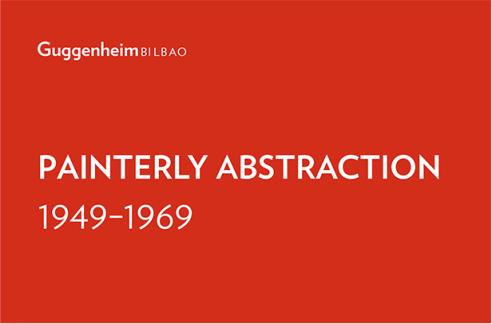
Guggenheim Museum Bilbao
Painterly Abstraction, 1949–1969:
Selections from the Guggenheim Collections
14 June–8 January 2012
Guggenheim Museum Bilbao
Avenida Abandoibarra, 2
48001 Bilbao Bizkaia Spain
www.guggenheim-bilbao.es
• Through selected works from the collections of the Solomon R. Guggenheim Museum, the Peggy Guggenheim Collection, and the Guggenheim Museum Bilbao, this exhibition explores major trends in U.S. and European painting in the 1950s and 1960s.
• The exhibition features approximately 80 works by more than 60 international artists, including Karel Appel, Alberto Burri, Willem de Kooning, Ellsworth Kelly, Piero Manzoni, Jackson Pollock, Antoni Tąpies, and Victor Vasarely, among others.
• This singular overview of two decades of art reveals the striking affinities among artists working continents apart, in a period of rapid creative development.
From June 14, 2011, to January 8, 2012, the Guggenheim Museum Bilbao will host Painterly Abstraction, 1949–1969: Selections from the Guggenheim Collections. The exhibition investigates major trends in U.S. and European art in a singular overview of two decades of creative output.
With nearly 80 works by over 60 artists from the collections of the Solomon R. Guggenheim Museum, the Peggy Guggenheim Collection, and the Guggenheim Museum Bilbao, the exhibition explores the similarities among different forms of artistic expression that emerged in Europe and North America. Many paintings on view in the exhibition were acquired by the Solomon R. Guggenheim Museum during its second director James Johnson Sweeney's tenure (1952–60). Since its inauguration in 1997, the Guggenheim Museum Bilbao has used the art of this period as the essential point of departure for its collection.
During the Cold War, numerous stylistic approaches to abstract painting emerged. In response to the devastation of World War II and the rise of existential philosophy, European artists turned to hybridization and synthesis in contrast to earlier, utopian and experimental values. Art Informel, or art without form, encompasses a wide array of abstract practices and painterly methods that emerged in this postwar era.
Painting in the United States was simultaneously evolving toward a gesture-based, highly expressive style. Like the creators of Art Informel, the Abstract Expressionists were interested in the process and essentials of making art, as well as tapping into their own unconscious mind or emotional states of mind.


